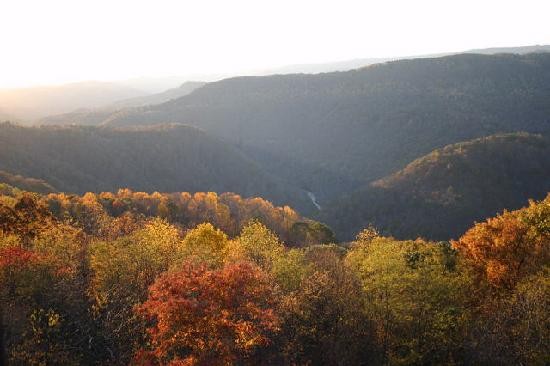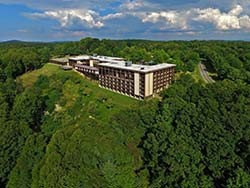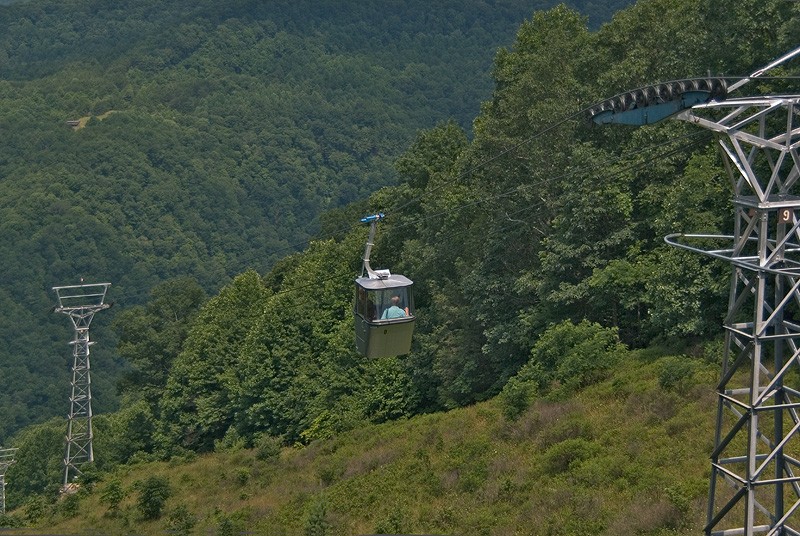Pipestem Resort State Park
Introduction
Text-to-speech Audio
Images
The view from Pipestem Knob- the highest point of the park.

The main lodge at Pipestem Resort State Park hold 112 rooms.

The aerial tram was installed in 1972 and transports guests from the edge of the gorge to the base of the gorge.

Backstory and Context
Text-to-speech Audio
Prior to becoming a state park, Pipestem was a functioning mountain community with schools and a post office. The town of Pipestem was named after a native blue flowered shrub, spiraea alba, in which the hollowed stems of the plant were used as both peace and tobacco pipes by Native Americans and settlers.
“Those mountaineer moonshiners lived in cabins on the plateau above the gorge, or resided in the villages of Pipestem, in Summers County, or Lerona, in Mercer County. They “bootlegged” their product, which they called “Living Water,” among the thirsty coal miners of Raleigh, Wyoming, Mercer, and McDowell counties They were a well-armed, wild, and lawless breed who zealously guarded their domain against unwanted intruders.” –Howard B. Lee, Prosecuting Attorney of Mercer County during Prohibition.1
Pipestem Resort State Park consists of over 4,000 acres that was purchased from 56 landowners. The park opened on Memorial Day in 1970 after several years and $14 million in construction making it the most expensive of the various West Virginia state parks. The state park includes wading pool and indoor swimming pool, a golf course, an ice skating rink, an amphitheater, a cafeteria and coffee shop, a miniature golf course, shuffleboard, ping pong, and a large patio all located around the park’s recreation center. Other amenities at Pipestem Resort State Park include over 10 miles of trails, horseback riding, a visitor center, and an 18-hole championship golf course designed by Geoffrey Cornish.
After enjoying the
visitor center, patrons can board a tram to the bottom of the Bluestone River Gorge
that drops over 1,000 feet vertically. Pipestem Knob Lookout can only be
reached by foot or horseback, and offers a stunning view of the Bluestone River Gorge. The main lodge at Pipestem Resort State park is built along the edge of
the gorge, while the Mountain Creek Lodge is located at the base of the gorge.
Sources
Meador, Michael M. "Pipestem Resort State Park." e-WV: The West Virginia Encyclopedia. 22 October 2010. Web. 27 March 2017.
